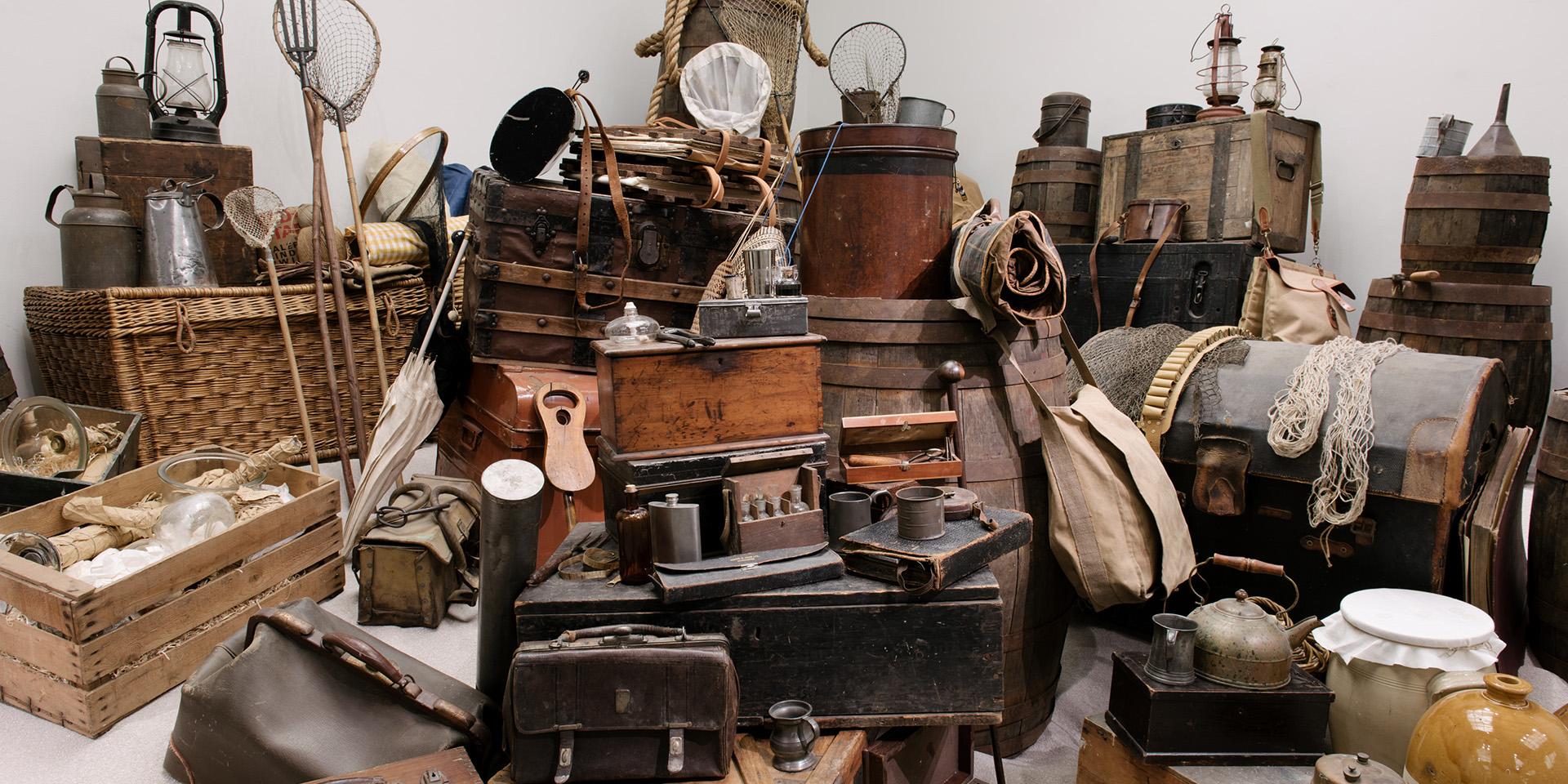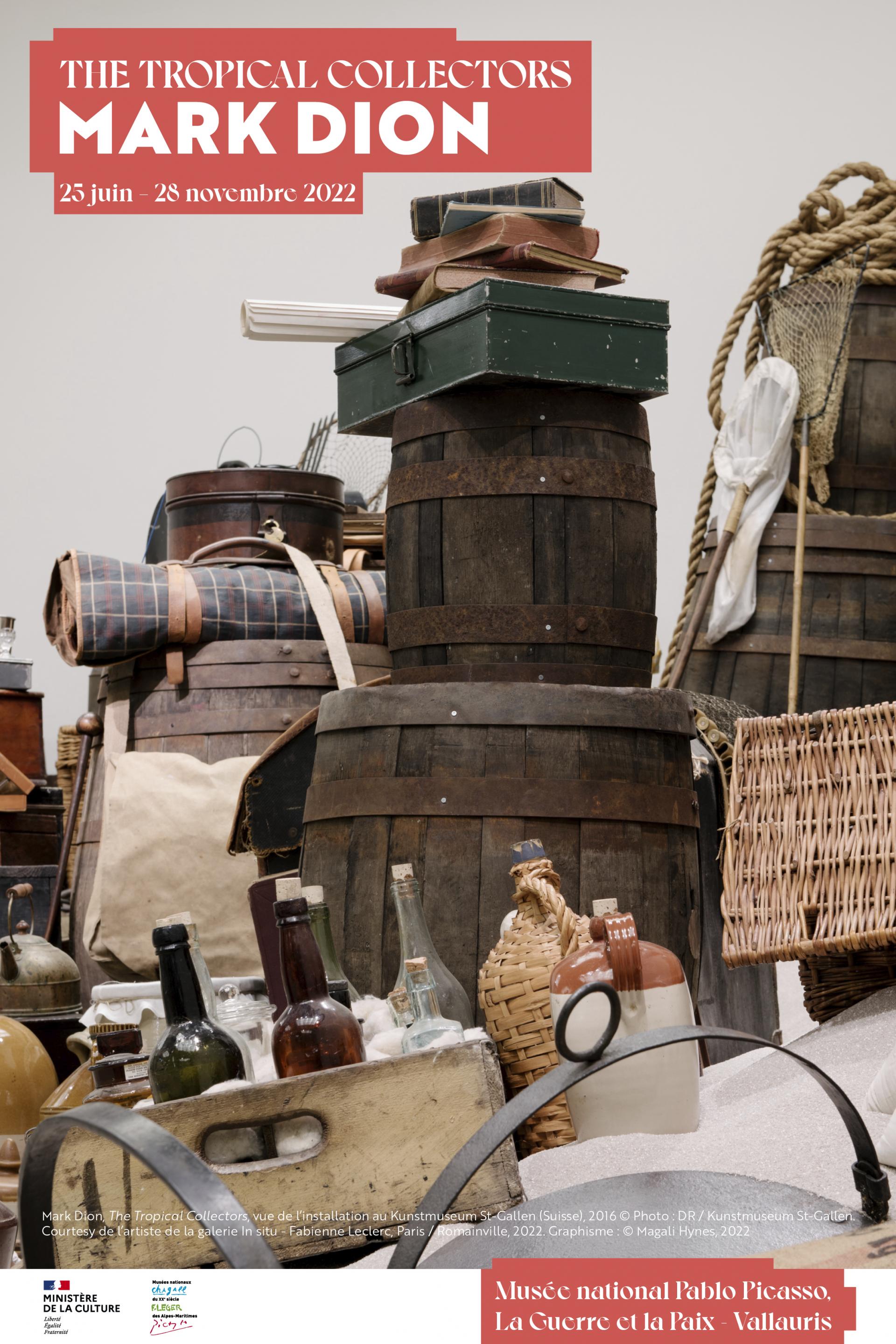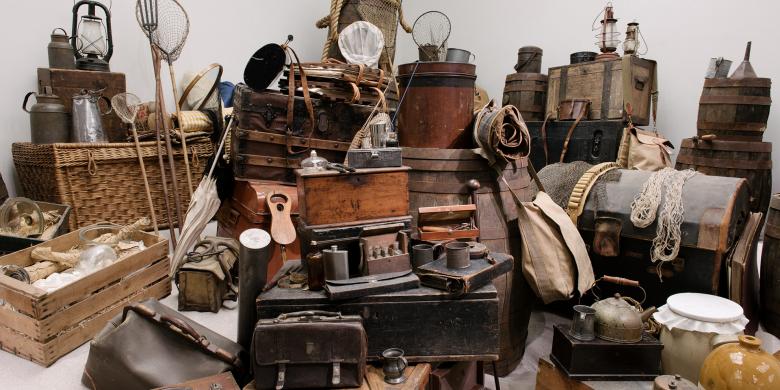Exhibition from 25 June to 17 October 2022 / Mostra dal 25 giugno al 17 ottobre 2022
Introduction to the installaton of Mark Dion, The Tropical collectors
Introduzione all'opera di Mark Dion, The Tropical collectors
 About this exhibition
About this exhibition-
Since the early 2000s, the national Museums of the 20th Century in the Alpes-Maritimes have placed creation at the heart of their artistic and cultural project. The Pablo Picasso national Museum, War and Peace, in Vallauris, specifically explores the question of commitment, echoing Pablo Picasso's (1881-1973) painted masterpiece.
Since his beginnings, nature and ecology have been at the heart of American artist Mark Dion's work. Over the years, the artist gradually moved away from a didactic standpoint, denouncing the destruction of nature by human pollution, to reflect on human representations of nature, particularly in the field of science. Many of his installations evoke places of study of nature: cabinets of curiosities or scientific laboratories.
The installation Tropical Collectors (Wallace, Bates and Spruce) was created in 2009 in Newcastle (Great Britain), for the group exhibition A Duck for Mr. Darwin: Evolutionary Thinking and the Struggle to Exist. Mark Dion chose to evoke three British naturalists, contemporaries of Darwin, whose explorations and work contributed to confirming Darwinian theories: Alfred Russel Wallace (1823-1913) and Henry Bates (1825-1892) explored the Amazon together from 1848. They were joined by Richard Spruce (1818-1893).
Beyond these three scientists, Mark Dion evokes here the figure and the commitment of the scientific explorers that he distinguishes from the settlers' figures. Heavily laden, these men spent several years in a challenging environment to advance knowledge of nature, observing thousands of specimens, describing natural phenomena and developing concepts that help us think about the world.
Placed on the sand, as if freshly landed on the banks of the river, the objects collected by Mark Dion, evoke in a poetic and almost nostalgic way, the equipment necessary for the great scientific expeditions. These could last several months and only succeed with the proper material to survive in the jungle but also with the scientific instruments to observe and collect specimens of the tropical fauna and flora. Through these everyday objects, the artist invites us to a meditation on human observations of nature, sometimes heroic, but always with consequences. With it’s nets, axes, guns and machetes, the work is a subtle critique of the violence inherent in natural history itself. Dion refers to this as “the culture of, to capture, to collect, to kill, to dissect, to classify, to display”.
Alfred Russel Wallace studied tropical areas but was also a theorist whose ideas were close to those of Darwin on natural selection and the origin of species. After exploring the Amazon from 1848 to, he lost the fruit of his research in a shipwreck. He then spent eight years in the Malaysian archipelago and invented the notion of "biogeography", embodied by the "Wallace Line", a line that separates the ecosystems of Asia and Oceania.Henry Bates is an entomologist who studied the fauna and insects of Amazonia for nearly nine years. He is at the origin of the concept of animal mimicry. In 1863, he published The Naturalist on the river Amazons which was a huge success, contributing to the heroic figure of the explorer.
Richard Spruce spent nearly fifteen years in the Amazon, collecting thousands of plant specimens; he was a specialist in lichens.
-
 Informazioni sulla mostra
Informazioni sulla mostra -
Dall'inizio degli anni 2000, i Musei Nazionali del XX° secolo delle Alpi Marittime hanno posto la creazione contemporanea al centro del loro progetto artistico e culturale. Il Museo nazionale Pablo Picasso, La Guerre et la Paix, a Vallauris, esplora la questione dell'implicazione, facendo eco al capolavoro pittorico di Pablo Picasso (1881-1973).
Fin dall'inizio, la natura e l'ecologia sono state al centro del lavoro dell'artista americano Mark Dion. Nel corso degli anni, l'artista si è progressivamente allontanato da una posizione didascalica di denuncia della distruzione della natura da parte dell'inquinamento umano per riflettere sulle rappresentazioni umane della natura, in particolare nel campo della scienza. Molte delle sue installazioni evocano quindi luoghi di studio della natura: "cabinets de curiosités" o laboratori scientifici.
L'installazione Tropical Collectors (Wallace, Bates e Spruce) è stata realizzata nel 2009 a Newcastle, in Gran Bretagna, per la mostra collettiva A Duck for Mr. Darwin: Evolutionary Thinking and the Struggle to Exist. Mark Dion ha scelto di evocare tre naturalisti britannici, contemporanei di Darwin, le cui esplorazioni e il cui lavoro hanno contribuito a confermare le teorie darwiniane: Alfred Russel Wallace (1823-1913) e Henry Bates (1825 - 1892) esplorarono insieme l'Amazzonia a partire dal 1848. A loro si unì Richard Spruce (1818-1893).
Oltre a questi tre scienziati, Mark Dion evoca qui la figura e l'impegno degli esploratori scientifici, che distingue dai coloni. Pesantemente carichi, questi uomini hanno trascorso diversi anni in un ambiente ostile per far progredire la nostra conoscenza della natura, osservando migliaia di esemplari, descrivendo fenomeni naturali e sviluppando concetti che ci aiutano a pensare al mondo.
Posati sulla sabbia, come se fossero appena sbarcati sulle rive del fiume, gli oggetti raccolti da Mark Dion evocano in modo poetico e quasi nostalgico l'equipaggiamento necessario alle grandi spedizioni scientifiche, che potevano durare diversi mesi e riuscivano solo con l'equipaggiamento per sopravvivere nella giungla ma anche con strumenti scientifici per l'osservazione e la raccolta di esemplari di flora e fauna tropicale. Attraverso questi oggetti quotidiani, l'artista ci invita a una meditazione sulle osservazioni umane della natura, a volte eroiche, ma non senza conseguenze. Con le sue reti, asce, pistole e machete, l'opera è una sottile critica alla violenza insita nella storia naturale stessa. Dion la definisce "la cultura della cattura, della raccolta, dell'uccisione, della dissezione, della classificazione, dell'esposizione".Alfred Russel Wallace studiò le aree tropicali ma fu anche un teorico con idee vicine a quelle di Darwin sulla selezione naturale e l'origine delle specie. Dopo aver esplorato l'Amazzonia nel 1848, perseil frutto delle sue ricerche in un naufragio. Trascorse poi otto anni nell'arcipelago malese e inventò il concetto di "biogeografia", incarnato dalla "Linea di Wallace", una linea che separa gli ecosistemi di Asia e Oceania.
Henry Bates è un entomologo che ha studiato la fauna e gli insetti dell'Amazzonia per quasi nove anni. Ha dato origine al concetto di mimetismo animale. Nel 1863 pubblicò The Naturalist on the river Amazons, che ebbe un enorme successo e contribuì alla figura eroica dell'esploratore.
Richard Spruce ha trascorso quasi quindici anni in Amazzonia, raccogliendo migliaia di esemplari di piante; è uno specialista di licheni.




